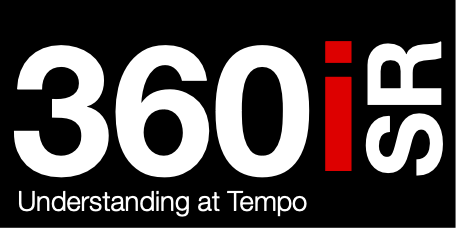The Future of ISR. Part 3 - The Answers
ISR and Cognitive Shift
Warfare has insidiously shifted into the cognitive domain, seemingly catching NATO forces off guard. This is somewhat surprising, as all Western military academies teach that the purpose of warfare is to change the will and/or perceptions of the target audience. However, operations conducted in Afghanistan, Iraq, and Libya were all focused primarily on the tactical level and mainly in the physical domain. Operations to affect the cognitive domain were considered but not fully understood, leading Western forces to revert to their comfort zone of tactical action in the physical domain.
Domains are widely defined. William Dries, in a War on the Rocks article, used the Miriam Webster definition for domain: 'a region distinctively marked by some physical or virtual feature(s).' This definition was further refined by Peter Garretson: 'A domain is a space in which forces can manoeuvre to create effects.' Dr. Jeffrey Reilly, Director for Multi-Domain Operations, defines a domain as a 'Critical macro manoeuvre space whose access or control is vital to the freedom of action and superiority required by the mission.' Dr. Riley's definition is widely used across NATO.
While it's relatively simple to imagine a physical domain where access can be restricted and superiority contested, it's more challenging to deny access to a cognitive domain or achieve superiority within it. Yet, this is essentially what Russian forces achieved in Crimea.
This presents a significant issue for the ISR community: how to track changes in the cognitive domain? ISR was developed to support decisions, most of which were targeting decisions and a vast majority were physical domain targets. "If the other guy turned up with a tank…" the ISR community would find, fix, and track that tank, providing a decision advantage to our forces. But the adversary didn't turn up with a tank, they didn't even turn up, rather they used social engineering to create a cognitive shift and we were left staring into the void.
General Sir Nick Carter summarises this issue well in his speech introducing the UK's Integrated Operating Concept. He describes threats from adversaries as aiming "to win without going to war: to achieve their objectives by breaking our willpower, using attacks below the threshold that would prompt a war-fighting response." Warfare became truly multi-domain and the ISR community, charged with creating understanding at tempo, was implicitly asked to understand the multiverse of madness.
In her book “Battle for your brain”, Nita Farahany discusses how some organisations use emerging technologies to monitor the cognitive behaviour of their employees. However, the military faces legal, ethical and moral challenges in accessing the cognitive domain of their adversaries, as well as a lack of open technology to do so. This creates a paradox: the enemy exploits the cognitive domain to achieve their objectives, while the military struggles to understand it.
This dilemma requires us to think creatively: if we cannot read the minds of our enemies or their populations, maybe we can infer their intentions and motivations from their actions. For example, if a population is dissatisfied or aggrieved, they may protest or riot. The ISR community needs to link these observable behaviours to their underlying causes… we need to find the smoking gun.

A recent case in point is the migration crisis on the Poland-Belarus border in November 2021, where global media reported that more than 1,000 migrants, escorted by Belarusian authorities, clashed with Polish police in an attempt to enter the EU. The migrants were not acting on their own accord, but were used as a weapon to destabilise Poland and the EU. The ISR community needs to identify and expose the orchestrator of this operation.
The Guardian newspaper reported on the Poland Belarusian migrant border issue in November 2021,
"More than 1,000 people, many fleeing dangerous conditions in Middle Eastern countries, arrived en masse at Poland’s border with Belarus this week, in a dramatic escalation of a simmering migration crisis on the edge of the EU. They had been escorted to the border by Belarusian authorities.
Clashes erupted with Polish police in riot gear. Some in the crowd tried to enter Poland by cutting a border fence or battering it with logs. Police deployed chemical sprays to push people back."
Equally if Russia decides to conduct mass exercises along the Latvian, Estonian border, the ISR communities should be creating understanding about the traditional, physical ORBAT questions, but now be equally focused on the effect that Russian physical activity has on the populations of Latvia and Estonia. Are the Russians conducting military exercises to practice their TTPs or are they conducting cognitive shaping by demonstrating the strength of Russian forces.
The Intel and ISR communities need to links activity with the organisation that "pulled the trigger".
The Future of ISR: From Crimea to Ukraine
So what? What can history teach us? Maybe nothing, maybe everything, the choice is yours. The choice is to observe these opportunities and consider the impact on your Dutch Forces and procedures. Because, as SACEUR recently stated, "The future will be hard."
In 2022, Russian troops amassed on the Ukrainian border for an offensive that many anticipated, but most were in denial. The lessons from the Ukraine war are numerous, with internet commentators offering opinions from various perspectives. What is clear is that the Ukraine war is not ought on the same terms as the last war. As Clausewitz stated in 'On War', "War is, therefore, not only a true chameleon, because it changes its nature in some degree in each particular case, but it is also, as a whole, in relation to the predominant tendencies which are in it, a wonderful trinity, composed of the original violence of its elements, hatred, and animosity." This trinity should now be considered across all domains: physical, information, and cognitive; this is the case of the Ukraine conflict.
The target audiences are vast: Zelensky is targeting NATO governments and populations as he crowd funds the conflict; Governments of EU and NATO member states assess the popular support for Ukraine and provide assistance and capability, and Russia undermines cohesion by targeting the war's centre of gravity; political will.
Add to this mix the very real and urgent front line, hard power exchanges in 3rd generation type battles, and the intervention of non-combatant, uncontrollable entities such as Anonymous and Elon Musk and it can be seen that Ukraine is one of the most complex mission spaces ever. This presents challenges and opportunities to the ISR community to create an understanding of all elements of the mission space and demands questions about the ethics and legality of targeting. Is. Starlink a force for good or not?
Framing the Commander's Intent
In the realm of Intelligence, Surveillance, and Reconnaissance (ISR), a strategic shift is imperative - from a requirements-centric approach to a problem-centric one. Analysts, platform operators, and consumers must articulate the problems they aim to solve, transcending the confines of mere compliance with established requirements. This shift is pivotal for success in modern military operations, hinging on a commander's adeptness in uniting the ISR enterprise in pursuit of campaign objectives.
Commanders must employ the time-honoured method of articulating intent, a cornerstone in establishing unity of effort for intricately structured operations. This step, though crucial, is often overlooked. As emphasised by the Chairman of the Joint Chiefs of Staff (CJCS), intent lies at the heart of mission command - an operational framework deemed "critical to our future success in defending the nation in an increasingly complex and uncertain operational environment." The CJCS further asserts that shared context is an indispensable catalyst for intent. In the mission command framework, intent amalgamates comprehension, assigned missions, and directives to subordinates. Commanders must possess the ability to convey their intent, as well as that of higher-ranking commanders, with precision, entrusting their subordinates to act with judicious initiative amidst complexity, rapid change, and chaos.
The linchpin of intent, therefore, lies in establishing a shared context. As Lawrence Shattuck astutely points out, it is insufficient to merely instruct subordinates on what to do and why. When circumstances permit, commanders should expound on the reasoning behind their decisions. This elucidation empowers subordinates to grasp the rationale and cultivate akin patterns of thought.
Over the past decade, ISR operations have underscored the criticality of elucidating intent not only to subordinates but also to higher headquarters and external organisations. Major John Ives, serving as the J2 for Combined Joint Special Operations Task Force– Afghanistan (CJSOTF-A), exemplifies this imperative by illustrating how his team advocated for the ISR strategy in Village Stability Operations (VSO), ultimately fostering shared context among higher headquarters' collection managers and supporting ISR entities.
Jason Brown comments, "Fearing our phased non-kinetic collection requirements, taken individually, would go uncollected, the J2 ISR team briefed the plan in its entirety to the [higher headquarters] collection managers (CM). The briefing flowed from the operational macro view of CJSOTF-A's mission to the tactical micro view of a village stability platform, followed by the comprehensive collection plan as it related to the phases of VSO expansion. . . . Linking the purpose of the collection plan to the individual requirements proved highly productive and informative. The CMs recognised the overall long-term phased collection plan as both sustainable and feasible."
All of this suggests that ISR strategy must start by framing the problem, setting mission expectations, and outlining objectives in a way that will guide the activities of disparate groups and organisations at all levels toward a common purpose.

The Problem is, we don't use problems
In the complex landscape of modern warfare, commanders and their ISR teams face a critical challenge: defining clear objectives before devising operational strategies. This process commences with a thorough evaluation of campaign goals to pinpoint the precise issues that ISR operations must address. However, recent campaigns have revealed a conspicuous absence of a unified framework for problem-solving in ISR endeavours, signifying a pressing need for consistency in data collection and analysis.
As I have illustrated, in the bygone era from the 1970s to the 1990s, the military Intelligence Community operated with a well-defined system for assessing potential adversaries, employing orders of battle overlaid with capability assessments. Although effective in conventional scenarios, this paradigm proved inadequate for the operations of the past decade. A definitive replacement framework is yet to emerge. The evolving nature of intelligence challenges necessitates a departure from preconceived notions, urging planners to define distinct problem sets rather than rely on entrenched organisational structures.
The process of problem delineation commences with an exploration of the objectives, methods, and resources of key stakeholders in the operating environment. This endeavour enables planners to establish manageable categories of intelligence problem sets (IPS) that serve as focal points in ISR planning. It is crucial, however, to eschew a mere rebranding of IPS as an order of battle. Utilising proper nouns (referring to people, places, and things) may inadvertently create analytical blind spots. Therefore, analysts and planners should pivot towards assessing activity, behaviour, and intent as the key criteria for defining IPS.
For instance, when evaluating threats to air operations, an intelligence unit might invest significant resources in scrutinising an integrated air defence system (IADS). What could be overlooked is the adversary's primary objective: not to shoot down aircraft, but to thwart aerial bombardments. While an IADS may be one avenue towards this objective, the adversary may employ alternate methods such as cyber-attacks or contamination of airbase water supplies. In this scenario, the most pertinent IPS would be the adversary's assault on our airpower. This process of framing problems through the ends-ways-means paradigm lays the foundation for a comprehensive analytic framework for the campaign, serving as the starting point for focused ISR efforts.
Once planners have identified IPS, they can then deliberate on how and where to deploy the ISR enterprise, guided by a series of probing questions. What are the strengths and limitations of ISR against each IPS? Which IPS holds the utmost relevance in the pursuit of campaign goals? How thinly can resources be spread across IPS while still providing effective support to the campaign? In addressing these inquiries, planners should consider five distinct roles and missions for ISR that have crystallised in the last decade: environmental comprehension, targeting, operational evaluation, threat notification, and operational vigilance. The commander must adeptly balance these roles and missions, discerning priority, resource allocation, and phased implementation within the overarching campaign strategy.
By embracing this strategic framework, commanders and their ISR teams can pave the way for a more cohesive and effective approach to intelligence gathering and analysis in modern campaigns. This holistic methodology ensures that resources are allocated judiciously, maximising their impact on campaign success.
The Future of ISR: Lessons Identified. Lessons Learnt
War is now being openly fought in the physical and information domains, and perhaps, counterintuitively, it matters more who wins the war of words rather than who has the most potent weaponry. The target of these actions is cognitive, as war, unchanging in its nature is an extension of politics by violent means to affect the will and perception of the adversary, ISR needs to understand this requirement and be scaled to create understanding at tempo across all domains and to understand the linkages between them.
ISR needs to be quicker in tasking, collection, processing, exploitation, and dissemination. There is little time to have large collection decks and collect data with little value. We should look beyond the intelligence requirement to understand the context of the intent or decision. ISR should connect the decision-maker to the environment (at tempo) so that they can achieve precision.

Throughout all recent conflicts and subsequent analysis, one thing remains true: the critical nature of ISR in contemporary warfare. Without ISR, there would be no real-time intelligence. Without real-time intelligence, there would be no real-time decisions, and a vast majority of operational missions would be put on hold.
"Twenty-two missions were cancelled with 90% of those owing to a lack of SA as to the relative locations of pro and anti-regime forces — an indication (and cost) of the lack of ISR."
UK Lessons Learnt, Libya
If we dig deeper, we begin to understand that ISR is intrinsically linked to information advantage and decision dominance; two aspects of modern conflict that many Western nations aspire to achieve. ISR has become indivisible from decision-making and decision-making is the precursor to effects. These three elements of operations should be considered as inseparable. Only if we accept this can we develop ISR, move away from antiquated Cold War procedures, and evolve to meet the demands of the contemporary mission space. I will leave you with aa personal thought:
"In modern warfare, you have those that create understanding and empower decisions and those that effect change. The days of differentiating between ISR and Ops are over."




